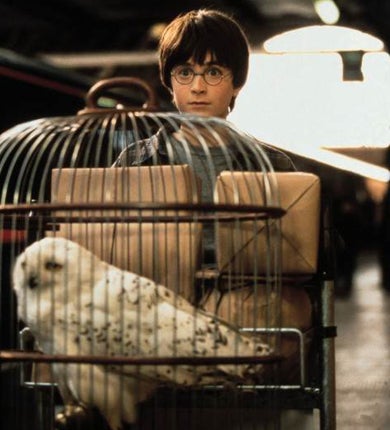The Hedwig effect: Harry Potter blamed for endangering owls

In the years since he was a callow pupil at the Hogwarts School of Witchcraft and Wizardry, Harry Potter and his associated world have known no shortage of controversy.
There have been claims the young wizard has promoted witchcraft, that his creator has made millions of pounds from ordinary prose and even unfounded allegations that she may have committed plagiarism.
But perhaps one of the most unlikely allegations was made this week by India's environment minister, Jairam Ramesh, who suggested Harry Potter may be at least partly responsible for the decline of the country's owl population.
"Following Harry Potter, there seems to be a strange fascination even among the urban middle classes for presenting their children with owls," he reportedly said. The comments about the influence of Harry Potter, who is accompanied in many of his adventures penned by JK Rowling by a snowy owl called Hedwig, came after the release of a report highlighting the threat to animals in India.
The report by the wildlife group Traffic, also cited the dark arts of magic as being responsible for the owls' decline but did not blame Harry Potter, instead suggesting that a number of owls were being killed, trapped and traded for traditional rituals.
"While the exact number of owls traded each year in the countrywide is unknown, it certainly runs into thousands... There are anecdotal reports of owls becoming rare throughout India due to loss of suitable habitat, especially old-growth forests," it said.
"The sacrifice of owls on auspicious occasions appears to be a regular practice and Traffic warns of a possible increase in owl trade and sacrifice around Diwali, the festival of light, which this year is [tomorrow].
"Shaman or black magic practitioners, prescribe the use of owls and their body parts such as skull, feathers, ear tufts, claws, heart, liver, kidney, blood, eyes, fat, beak, tears, eggshells, meat and bones for ceremonial rituals."
The report, which is supported by WWF India and the International Union for the Conservation of Nature, says that half of India's 30 species of owl can be found on sale in markets.
The UK publisher of the Harry Potter books, Bloomsbury, has yet to comment on Mr Ramesh's claim.
Elsewhere, others have suggested he might be right. "It's likely, because when people get entranced, it pushes their curiosity," said Kartick Satyanarayan, founder of the NGO Wildlife SOS. "I cannot say for sure but I think it's a factor. People believe there is a mystical aura to that particular bird."
According to reports, all of India's owl species are protected under a 1972 law, while an amendment bans the trade, hunting and transport of the creatures. Despite this, demand is said to be such that owls have even disappeared from zoos. The environment minister urged people to help safeguard the country's owls.
"Diwali should be a time for celebration across our nation, not one when our wildlife is plundered to feed ignorant superstition," he said. "India's wildlife already faces many pressures; the additional burden of being killed out of ignorance and fear is not one that has any place in our modern society. Owls are as important to our ecosystem as tigers are."
Subscribe to Independent Premium to bookmark this article
Want to bookmark your favourite articles and stories to read or reference later? Start your Independent Premium subscription today.

Join our commenting forum
Join thought-provoking conversations, follow other Independent readers and see their replies